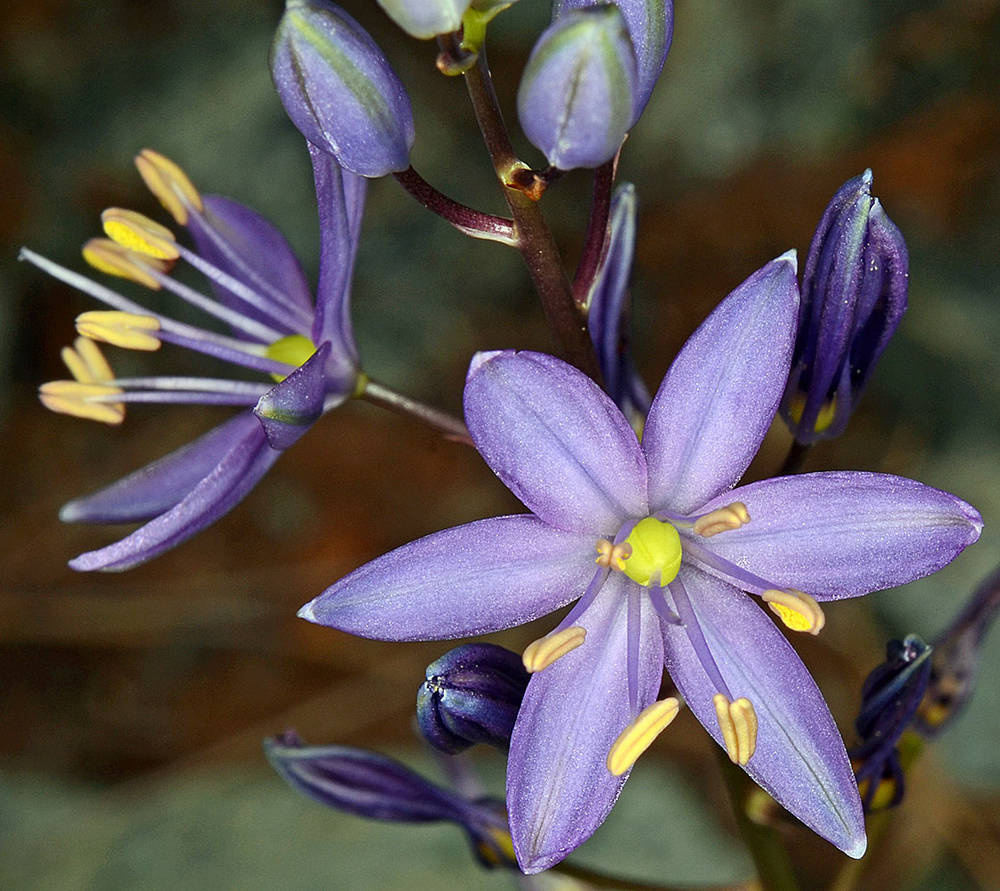
Plants vespertine; 20–60 cm tall; bulbs solitary.
Leaves 4–9(10), lanceolate, 10–70 cm × 3–12 mm.
Inflorescences nodes 5–80, with up to 30 flowers open at once; sterile bracts 0–3, most equal or shorter than pedicels, tan to pale green; pedicels often form broad angle with stem, but may curve inward.
Flowers corollas radially symmetric; tepals 10–20 × 3–5 mm, blue to blue-violet, withering connivently and twisting off top of fruit or deciduous from pedicels that remain on stem, veins 3(5).
Fruits globose, 5–10 × 5–9 mm, shiny when young but dulling with age.
Seeds 2–5 per locule.
Open grassy or gravelly meadows, Jeffrey pine slopes, oakmadrone savanna, usually on serpentine soils. Flowering Apr–Jun. 200–700 m. Sisk. CA. Native.
The initially globose, shiny fruits and vespertine flowering found in C. howellii are unusual. In most camas species, new flowers open late afternoon to early evening and remain open, but flowers of Howell’s camas have a short floral life span (tepals close between dusk and dawn or shortly thereafter without reopening; Howell 1903, Kephart et al. unpublished). This feature may link Camassia to vespertine species within Chlorogalum (Jernstedt 2002). The small-flowered C. howellii sometimes grows in mesic habitats near great camas (C. leichtlinii), which flowers earlier in wetter, rocky seeps. Despite these differences, putative hybrids occur, as supported by morphological and phylogenetic evidence (Fishbein et al. 2010).
as described under Camassia howellii
Bulbs sometimes clustered, ovoid, 1.5-3 cm diam. Leaves 4-7, 2-6 dm × 5-12 mm. Inflorescences 15-40 cm; sterile bracts 0, bracts subtending flowers shorter than or equaling pedicel. Flowers actinomorphic; tepals connivent over capsules after anthesis, deciduous as capsules develop, deep bluish violet, each 3- or 5-veined, 10-20 × 3-5 mm; anthers yellow, 2.5-3.5 mm; fruiting pedicel spreading, 15-25 mm. Capsules deciduous, shiny green, subglobose, 5-10 mm. Seeds 2-5 per locule. 2n = 30.Flowering late spring. Wet meadows; of conservation concern; 200--400 m; Oreg.Camassia howellii flowers one to two weeks later than sympatric populations of C. leichtlinii.